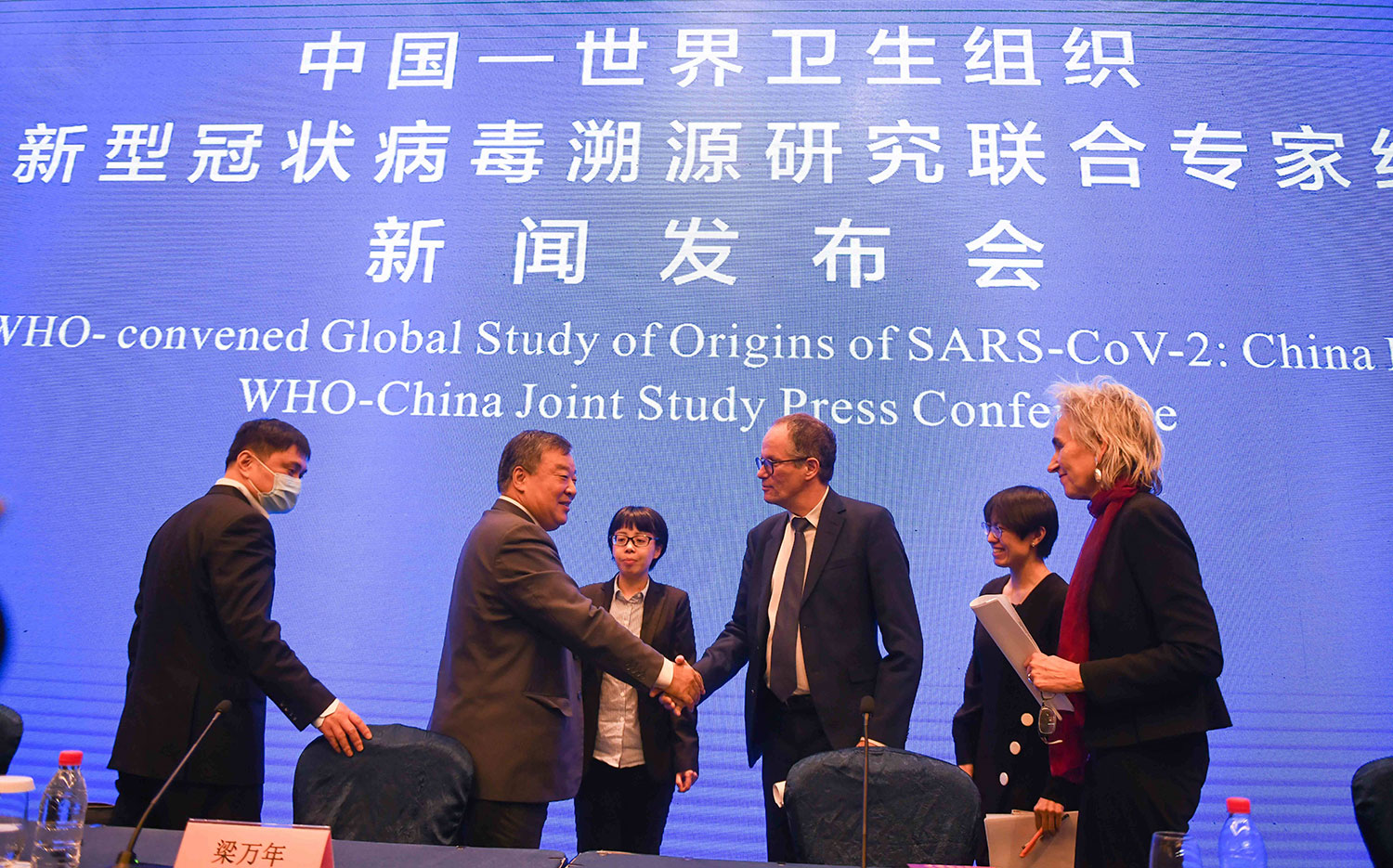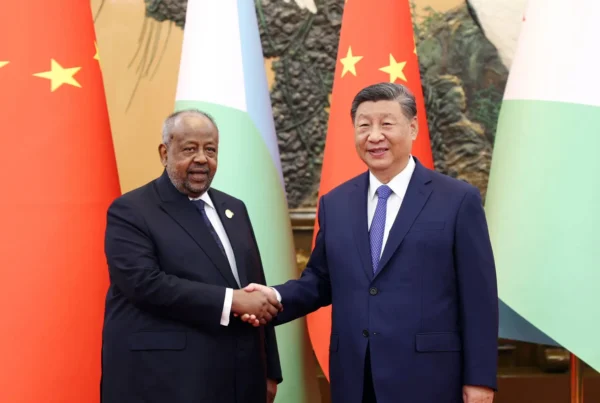The results of the WHO-China Joint Study left more questions unanswered than answered. Their Wuhan investigation conducted from 14.1. to 10.2.2021 could not prevent a new narrative on the origin of COVID-19 from emerging. Despite the efforts of the Chinese government, the Wuhan Institute of Virology remains at the center of this discussion. Making the case for a lab leak origin of the virus is no longer relegated to conspiracy theory.
Susanne Weigelin-Schwiedrzik and Hans Peter Schwarz, 11 April 2021
On March 26, 2021, CNN broadcast a documentary, Autopsy of a pandemic: 6 doctors at the center of the US Covid 19 response. One of the six doctors who was interviewed by CNN’s chief medical correspondent, Dr. Sanjay Gupta, was Dr. Robert Redfield, until late 2020 the Director of the US Center for Disease Control (CDC). Dr. Redfield believed that the “most likely etiology of this pathogen in Wuhan was from a laboratory, escaped”. While this remark remained unnoticed by European media, it initiated a change of narrative in the US and was discussed quite intensively in East Asia, where the mainstream media have accepted the possibility that the virus could have escaped from the Wuhan Institute of Virology (WIV).
This CNN documentary was released shortly before the WHO-China Joint Study was published on March 30, 2021. The study concluded that “a laboratory origin of the pandemic was considered to be extremely unlikely”, favoring the explanation of either direct zoonotic transmission, zoonotic transmission by an intermediate host or through the cold/food chain. Despite this finding, the leader of the WHO team, Peter Ben Embarek, stated in an interview with Science that the lab theory is still on the table and admitted that “politics was always in the room”.
Analysts in East Asia speculated on the timing of Dr. Redfield’s CNN statement. As a US official during the Trump administration, his hypothesis would likely have heavily strained US-China relations. During the Trump presidency, Dr.Anthony Fauci, a lead member of the President’s Covid-19 task force, was of the opinion that a majority of scientists in the US believed that the COVID-19 virus was of natural origin (thereby rejecting the lab accident theory). Interestingly, Dr.Fauci was responsible at the NIH for allowing NIH research funding to reach the EcoHealth Alliance and eventually the WIV. US intelligence officials, despite pressure from the Trump White House, concluded “that the Covid-19 virus was not man-made nor genetically modified”.
WHO Joint Study Team and Their Report
The WHO team was only allowed to enter Wuhan one year after the outbreak of the Covid-19 pandemic. It therefore comes as no surprise that data showing that an incident had taken place or that lab workers had been infected with pneumonia was completely missing. The 17 non-Chinese members of the delegation did not have access to any raw data or notebooks and none of them could read Chinese language materials or interview lab workers without the presence of an interpreter. Indeed, there was no expert on bio-safety, bio-technology or protein engineering on the team. This could also explain why the WHO’s DG, Tedros Adhanom Ghebreyesus, rated the lab accident hypothesis more likely than was assessed in the joint report.
To counter the narrative of a laboratory accident, scientists from around the world were asked to sign an open letter stating that they “… stand together to strongly condemn conspiracy theories suggesting that COVID-19 does not have a natural origin.” This initiative was launched by Peter Daszak and published by the Lancet in February 19, 2020. Peter Daszak is, coincidently, president of the US-based EcoHealth Alliance which had received funding from the NIH to support research on the Corona virus at the Wuhan Institute of Virology.
What Could Have Gone Wrong at WIV?
China’s top laboratory of Virology, WIV, created by PRC president and Party Chairman Jiang Zemin after the 2003 SARS outbreak, leads the world in Corona virus research. Jiang opted for an international collaboration of WIV with France. Although US intelligence classified research on the Corona virus as too dangerous in light of its potential military use, the US ultimately invested heavily in this lab.
Laboratory accidents with natural occurring coronavirus have happened before: Three separate fatal laboratory incidences with SARS-CoV are reported to have taken place in Singapore, Taiwan and Beijing in 2003 and 2004. This shows that laboratory handling of live SARS-CoV are potential sources of infection and very strict adherence to effective biosafety practices is important.
To determine what kind of accidents might have happened at the WIV, a thorough investigation of the lab is absolutely necessary:
Hypothesis 1: The accident occurred while handling a novel naturally evolved bat Corona virus. From the publication record of the WIV, we know that it is the WIV`s mission to establish the most comprehensive collection of bat Corona viruses. For this purpose, WIV´s key scientist, Shi Zhengli, has collected countless bat Corona viruses from caves in China and published results of their characterization in top international journals. The Corona virus RaTG13, a proposed ancestor of SARS-CoV-2, first discovered in 2013, shares 96.2% genomic similarity with SARS-CoV-2. This Corona virus caused symptoms similar to SARS-CoV-2 and was characterized at the WIV.
Hypothesis 2: Artificial Corona virus construct experiments to increase infectivity and pathogenicity (so called gain-of-function experiments) are high risk. We know that virus construct experiments were conducted at the WIV because they have been published. We also know that other labs temporarily stopped pursuing these experiments because of the high risk. The above-mentioned Corona virus RaTG13 could have been used as the basis for the creation of SARS-COV-2.
Peter Daszak, WIV scientist Shi Zhengli and other scientists from the WIV worked on gain-of-function experiments at the WIV. These experiments had been banned in the US under the Obama administration because of their high risk. After the pandemic outbreak, Yuan Zhimin, director of the WIV, stated vis-à-vis the ORF that “…the WIV has no intention nor the knowhow and capabilities to design and construct new corona viruses”. Yet the first chimeric corona virus construct, by Wuhan scientists, was published as early as 2008 in the Journal of Virology.
Neither the WHO nor any independent international organization has certified the WIV as a so-called P4m lab (BioSafety Level 4) having the highest security standards. The US had sponsored Corona virus research at WIV and, prior to the outbreak of the pandemic had sent scientists to the lab who reported on the unsatisfactory bio-safety situation. President Trump halted all funding to the WIV. The insufficient security standards could explain the reluctance of the French scientists to continue their collaboration with the WIV.
Why Is The Narrative Changing Now?
Before the Joint WHO-China Study was announced, a group of 26 scientists wrote an open letter, published simultaneously in the US and in France on March 4, 2021, in which they voiced their doubts about the validity of the investigation of the WHO delegation in Wuhan. They pointed to the fact that the research team in Wuhan consisted of 17 non-Chinese and 17 Chinese experts, whose decisions were made by unanimous vote of the entire team – giving the Chinese a veto. The WHO team was ill-equipped to undertake forensic examination of lab practice. No member of the WHO team was an expert on bio-safety, bio-technology or protein engineering. They concluded: “Although the joint team investigation was a significant opportunity for the international community to gain some limited and highly curated information, it has unfortunately proven opaque and restrictive, greatly compromising the scientific validity of the investigation… If we fail to fully and courageously examine the origins of this pandemic, we risk being unprepared for a potentially worse pandemic in the future”.
Chinese Assessment Of The Report
According to the official reports in the PRC, the joint investigation by Chinese and non-Chinese experts was a total success. During the press conference in Beijing on March 30, 2021, four Chinese experts and the leader of the non-Chinese group of experts, Peter Ben Embarek, introduced the Joint Study, declaring that “the study was independent, professional, and transparent, and a strong deconstruction of conspiracy theories propelled by some Western politicians”.
Interestingly, the official report in Beijing on this press conference was published on the webpage of the Disciplinary and Control Commission of the CCP Central Committee and the State Supervisory Commission of the PRC. There is reason to believe that these two commissions were responsible for the supervision of the Chinese members of the investigation team. The claim that they could work independently and beyond political constraints seems doubtful.
Political Concerns Voiced Belatedly
Meanwhile, some 14 countries, including the US, Australia, Canada, the Czech Republic, Denmark, Estonia, Israel, Japan, Latvia, Lithuania, Norway, the Republic of Korea, Slovenia and the United Kingdom released a joint statement showing concern for the lack of transparency of the WHO-China Joint Study. The hesitation of the West could be due to the fact that Australia, which first voiced the demand for an investigation in Wuhan and the possibility of a lab accident, was immediately sanctioned by the Chinese government. Now that the US-Senate has seriously considered the possibility of a lab origin for the pandemic, the topic is no longer off limits. Yet only a few EU countries, and none of the large EU members, are supporting the statement.
What We Could Have Learned But Did Not
The investigation undertaken by Chinese and non-Chinese experts could have been much more successful had the international community taken the issue more seriously and shown more concern for the success of the mission. Not knowing the origin of the pandemic means that there is great difficulty in understanding the virus thoroughly and in predicting future challenges. Not insisting on the People’s Republic of China’s accepting a study team of international specialists and not allowing research without any limitations puts all scientists involved in the investigation in an awkward position. The doubt remains inside and outside of the PRC whether or not everything is known regarding the origin of the pandemic. The fact that the normally active media mostly shied away from reporting on the origins of the virus and that the governments of most countries affected by the pandemic decided to turn a blind eye on the importance of the issue has by now created a situation which makes further research with more convincing results highly unlikely. Last but not least, the fact that so many academics around the world believed and actively supported the idea that only conspiracy theorists could insist on the necessity to seriously consider the lab accident theory clearly does not do honor to what scientists like to call the objectivity and incorruptibility of the scientific research community.





